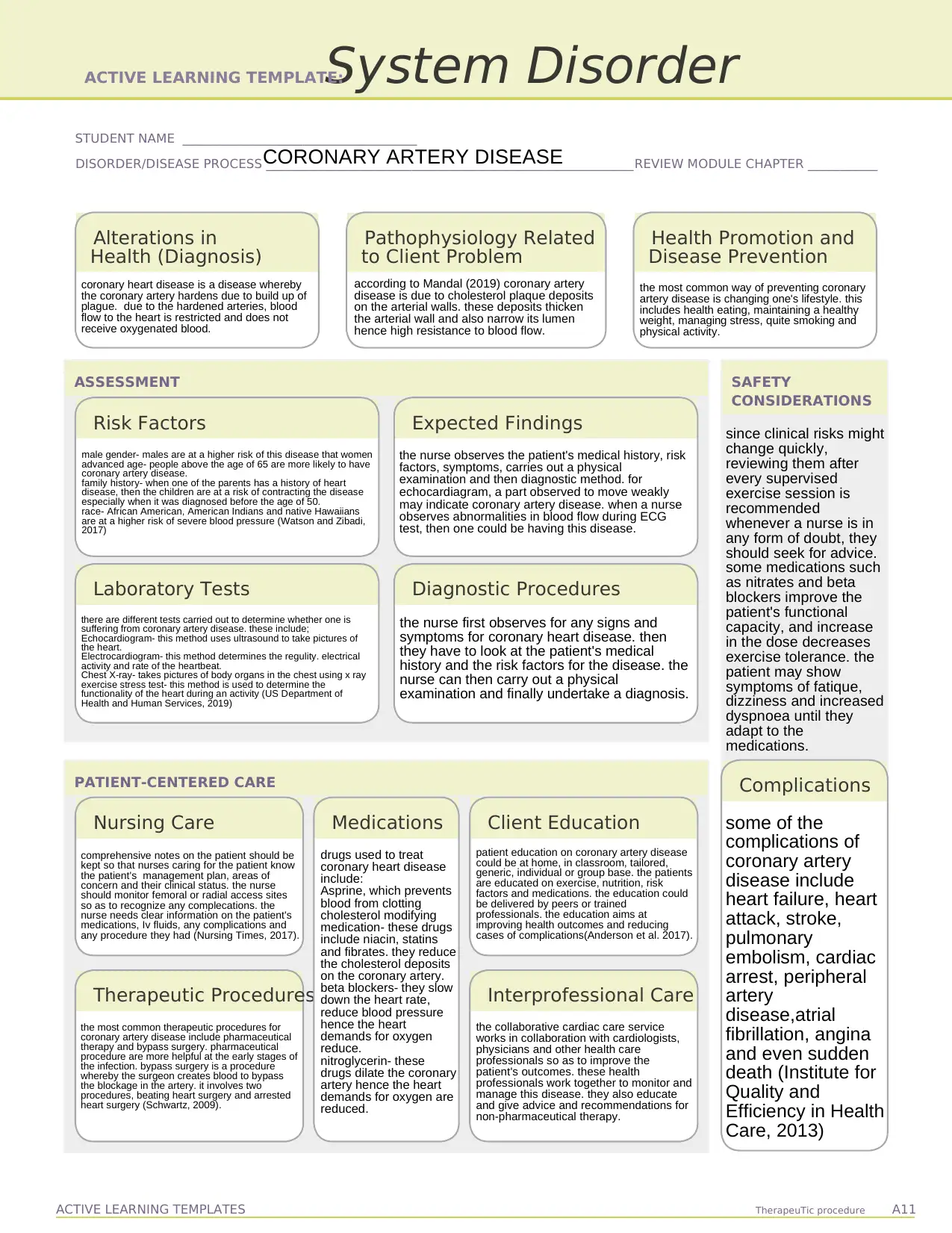Coronary Artery Disease (CAD) Active Learning Template - Nursing Care
VerifiedAdded on 2022/10/04
|1
|908
|45
Homework Assignment
AI Summary
This assignment presents an active learning template focused on Coronary Artery Disease (CAD). It delves into the disorder's process, including alterations in health and diagnosis, specifically detailing how the coronary arteries harden due to plaque buildup, restricting blood flow. The template covers the pathophysiology, emphasizing cholesterol plaque deposits and their impact on arterial walls. It outlines health promotion strategies, particularly lifestyle changes, and explores risk factors like gender, age, and family history. Assessment considerations include laboratory tests such as echocardiograms and ECGs, alongside diagnostic procedures like chest X-rays and stress tests. The assignment highlights patient-centered care, including nursing interventions like monitoring access sites and providing clear medication information. Therapeutic procedures, such as pharmaceutical therapies and bypass surgery, are discussed, alongside patient education on exercise, nutrition, and medications. The assignment also touches upon interprofessional care, the collaborative efforts of healthcare professionals, and potential complications such as heart failure and stroke. The template also includes information on ischemic cardiomyopathy, its causes, symptoms, and diagnosis.







![[object Object]](/_next/static/media/star-bottom.7253800d.svg)